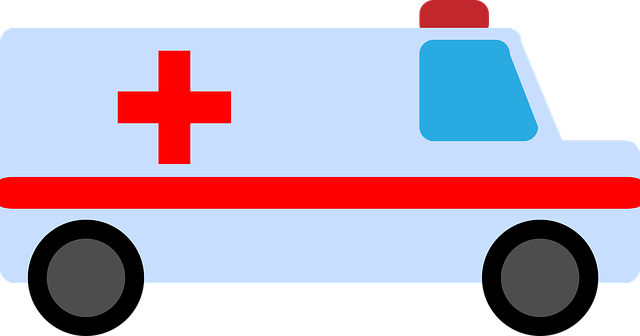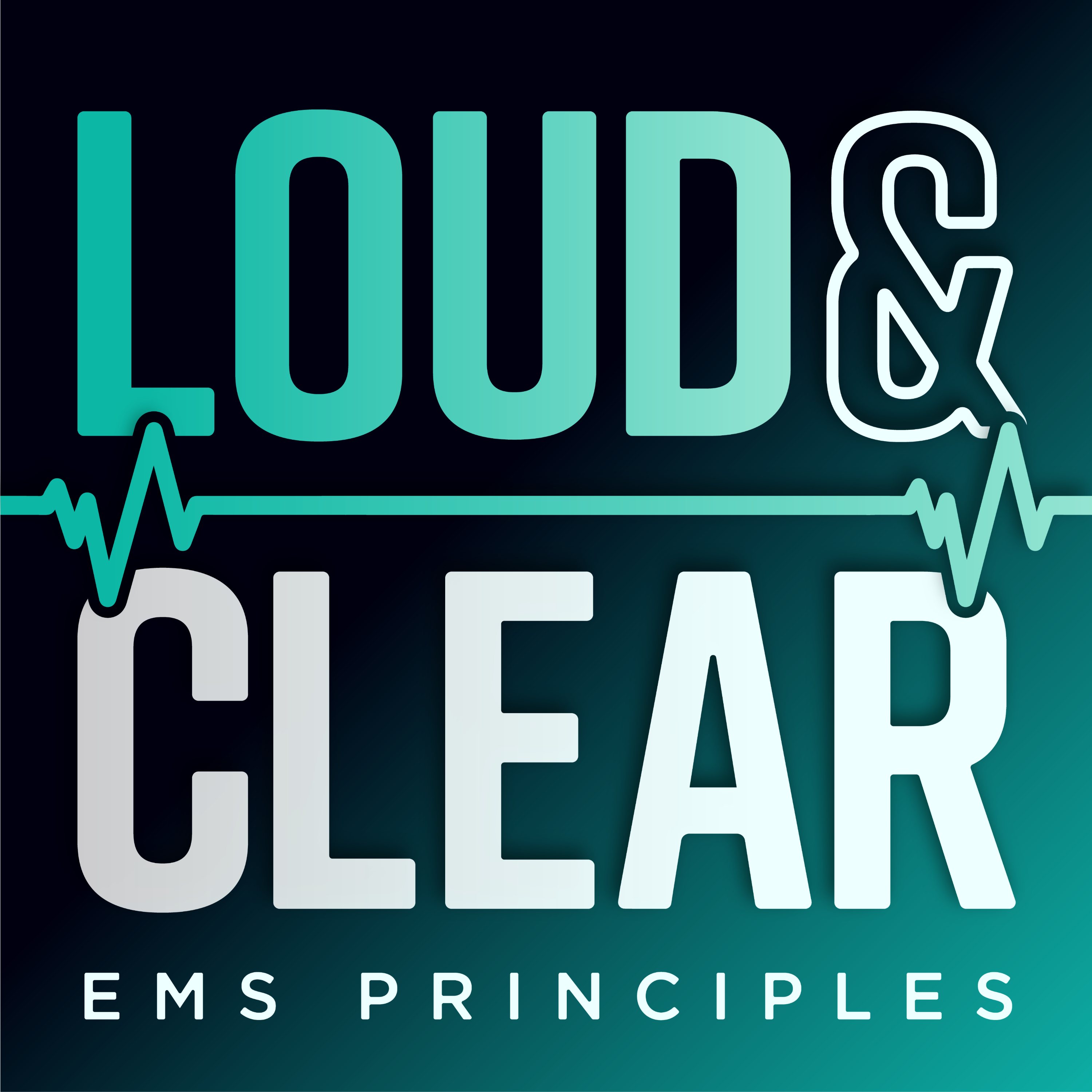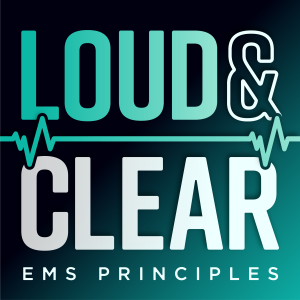

115.4K
Downloads
99
Episodes
Paramedic training is over, you’re in the front seat now. Whether day 1 or day 1,000 you can’t shake the fear you’re underprepared. You were taught to systematically decide if A... do B. But what if “A” wasn’t in the book? The truth is each emergency call is too unique to teach the right response to every situation. We need to go beyond algorithmic thinking and understand deeper principles, the WHY behind the algorithm. When every decision counts you want to rely on a framework that will guide you when things don’t make sense. Loud & Clear: EMS Guiding Principles is your resource to build that framework. Through discussions with experts, review of evidence-based best practices, and real-world case studies we teach you one step past what you learned in paramedic school. But all of this advanced education is connected back to the guiding principles that answer the question- “at the end of the day, what actually matters to the patient I have in front of me?” Our mission is to elevate your practice and help you improve patient outcomes in every emergency situation. You may not feel ready, you may not feel like you know enough, but by understanding the guiding principles of emergency medicine you can become an expert EMS clinician. Because what you do matters. Loud & Clear: EMS Guiding Principles is an EMS Cast LLC production
Episodes

Monday Oct 21, 2024
Monday Oct 21, 2024
Creating lasting behavioral changes in the workplace by moving beyond consequence-based policies. Chris discusses the importance of aligning personal and company values, highlighting 'just culture' in EMS and its role in understanding motivations and systemic issues. The conversation covers leadership in EMS, focusing on the significance of fostering supportive relationships with staff and avoiding fear-based management. Additionally, Chris shares his journey from paramedic to Field Training Officer, offering advice on effective training and mutual support. This episode is packed with valuable insights for anyone in the EMS field aiming to enhance performance, commitment, and team dynamics. Don't forget to check below for further resources on just culture and motivational learning.
Guest/Cast/Crew information-
Guest- Chris Pfingsten, Co-host of EMS 20/20
Host- Ross Orpet, Will Berry
Resources
- Other episodes you might like
- Ep. 72 From Errors to Excellence with Geoff Murphy, Master Your Medics
- Books
- Just Culture- https://amzn.to/4eOMN7w
- Crucial Conversations- https://amzn.to/3BRBnRI
- YouTube Videos-
Catch up with us after the show
- Instagram- @emscast
- Twitter- @ems_cast
- Website- www.emspodcast.com

Monday Oct 07, 2024
Are They Choking? Esophageal Foreign Body
Monday Oct 07, 2024
Monday Oct 07, 2024
- Resources and links
- This episode was inspired by an article on EMSAirway.com- Friday Night Lights- Shift 9 Steak Night
- EMScast15 - code for 15% off an awesome pair of sunglasses
- Help Us By Filling Out Our Audience Survey
- Medic Box - awesome medical gear shipped directly to your door
- Articles-
Guest/Cast/Crew information-
Host- Ross Orpet, Will Berry
Catch up with us after the show
- Instagram- @emscast
- Twitter- @ems_cast
- Website- www.emspodcast.com

Monday Sep 23, 2024
Monday Sep 23, 2024
Delve into a real-life rescue mission conducted by the U.S. Air Force Pararescue Jumpers (PJs) in the North Atlantic Ocean and learn ten crucial lessons for enhancing EMS practice. Dr. Michael Lauria shares these ten critical lessons from this challenging scenario that are essential for medical professionals working in any prehospital environment. From the importance of preparation and the power of a small team, to the significance of continuous learning and the dynamic nature of safety, these insights are invaluable for enhancing clinical practice. Tune in to learn how these lessons can be applied to improve how you approach the job.
Guest/Cast/Crew information-
Guest- Dr. Mike Lauria
Host- Ross Orpet, Will Berry
Resources
- Other episodes you might like
- Third-party websites where you can learn more
- Podcast announcements
Catch up with us after the show
- Instagram- @emscast
- Twitter- @ems_cast
- Website- www.emspodcast.com

Monday Sep 16, 2024
Monday Sep 16, 2024
Pediatric BVM Delivers More Ideal Volumes in Mannequins
Small BVMs Lead to Decreased Survival in a Small Real World Study

Monday Sep 09, 2024
The Critical Four Minutes: AMAX4 framework for Anaphylaxis
Monday Sep 09, 2024
Monday Sep 09, 2024
Explore anaphylaxis care from the basics to the critical approach to managing severe anaphylaxis with Bruce Hoffman, FlightBridge ED senior educator. Find out what it means to be aggressive with anaphylaxis care explained through the AMAX4 framework. Learn how the framework can help reverse anaphylactic shock and prevent catastrophic outcomes. Hear the impactful story behind the framework and gain insight into the most effective practices for treating unresponsive anaphylactic and asthmatic patients. Special thanks to the McKenzie family for their mission-driven educational work.
- Resource links
Guest/Cast/Crew information-
Guest- Bruce Hoffman- Goodwin University Program Director and Assistant Professor, FlightBridgeED senior educator, Bay State Health Critical Care RN and Paramedic
Host- Ross Orpet, Will Berry
Catch up with us after the show
- Instagram- @emscast
- Twitter- @ems_cast
- Website- www.emspodcast.com

Monday Aug 26, 2024
Monday Aug 26, 2024
The Power of Embracing Mistakes- Special guest Geoff Murphy, founder of Master Your Medics, shares how acknowledging and learning from mistakes can save lives in the field of prehospital medicine. Recorded at the Fast 24 conference, this episode emphasizes the importance of cultivating a culture of safety, vulnerability, and continuous learning within EMS teams. Discover actionable strategies to foster a psychologically safe environment where mistakes are openly discussed and used as invaluable learning tools to enhance professional development and patient care. This insightful discussion is a must-watch for anyone looking to elevate their skills and create a high-performing EMS team.
- EMScast15 - code for 15% off an awesome pair of sunglasses
- Enter to Win a FREE Pair of Frontline Optics Sunglasses
- Medic Box - awesome medical gear shipped directly to your door
Guest/Cast/Crew information-
Guest- Geoff Murphy, founder of Master Your Medics
Host- Ross Orpet, Will Berry
Resources
Catch up with us after the show
- Instagram- @emscast
- Twitter- @ems_cast
- Website- www.emspodcast.com
00:00 Introduction: The Power of Discussing Mistakes
00:38 Welcome to EMS Cast
00:52 Today's Topic: How Mistakes Can Save Lives
01:16 Embracing Failure: Insights from Jeff Murphy
01:37 Creating a Culture of Safety and Vulnerability
06:29 The Fearless Organization: High vs. Low Performing Teams
11:49 Personal Stories: Learning from Mistakes
19:15 Master Your Medics: The Journey and Vision
23:43 Conclusion: The Path to Mastery

Monday Aug 12, 2024
Poisons of the Sea: Not Just a Coastal Problem
Monday Aug 12, 2024
Monday Aug 12, 2024
Think you only need to worry about toxicities that exist in the sea if you live by an ocean? Think again. No matter where you are fish may be on the menu, or there may be a zoo nearby, or a marine enthusiast with an elaborate home aquarium. These toxicities can be seen in Colorado. They can be in Australia or in the US. No matter where you are you have the potential to see one or many of these. From scombroid poisoning to puffer fish, irukandji syndrome, jellyfish, and sea snakes- tune in to this week's episode to learn all about the various poisons that come from the sea with toxicologist Nik Matsler.
- Website show notes link
- EMScast15 - code for 15% off an awesome pair of sunglasses
- Enter to Win a FREE Pair of Frontline Optics Sunglasses
- Medic Box - awesome medical gear shipped directly to your door
Guest/Cast/Crew information-
Guest- Dr. Nik Matsler
Host- Dr. Ross Orpet and Critical Care Paramedic Will Berry
Resources
- Other episodes you might like
- Episode 26: Snake Bites
- Episode 25: Cocaine Overdose
- Third-party websites where you can learn more
Catch up with us after the show
- Instagram- @emscast
- Twitter- @ems_cast
- Website- www.emspodcast.com

Monday Jul 29, 2024
Monday Jul 29, 2024
EMScast15 for 15% Off Frontline Optics Sunglasses
Enter to Win a FREE Pair of Frontline Optics Sunglasses
Blog Post and Critical Runner Algorithm- The Critical Care of the Sick Runner

Monday Jul 15, 2024
EMCRITs Scott Weingart on How to Master the Resuscitation
Monday Jul 15, 2024
Monday Jul 15, 2024
EMCRIT's Scott Weingart discusses the concept of being a true resuscitationist. The mindset necessary for providing aggressive, excellent care outside hospital boundaries and the emphasis on the importance of preparation, critical thinking, and meticulous attention to detail in emergency medical situations. Dr. Weingart shares insights on mental simulation, embracing challenges, handling crises efficiently, and continuous self-improvement. We conclude our discussion by exploring the philosophy 'Amor Fati' and underscore the broader impact EMS professionals can have beyond simply saving lives.
Enter to Win a FREE Pair of Frontline Optics Sunglasses
EMScast15 for 15% Off Frontline Optics Sunglasses
Blog Post- How to Master the Resuscitation

Monday Jul 01, 2024
Building Better Providers: Eric Bauer, Lessons from FlightBridgeED
Monday Jul 01, 2024
Monday Jul 01, 2024
Will and I recently attended FAST24, an educational conference hosted by FlightBridgeED in Wilmington, North Carolina. We had a fantastic time meeting industry top speakers, including Eric Bauer, one of the original founders of FlightBridgeED. In today's episode, we delve into Eric's journey in EMS education, how FlightBridgeED was conceived, and the importance of continuous learning. We also discuss the challenges of becoming an expert in the field and tips on improving your skills incrementally. Join us as we explore these valuable insights and look forward to upcoming episodes featuring more stellar guests from FAST24!
Enter to Win a FREE Pair of Frontline Optics Sunglasses
EMScast15 for 15% Off Frontline Optics Sunglasses
Blog Post- Building Better Providers